Do you enjoy a good cup of tea but aren't sure how to brew loose leaf tea? This guide will walk you through tips and tricks that make it easy!
By: Nicole McKinney of Tea on the Trail
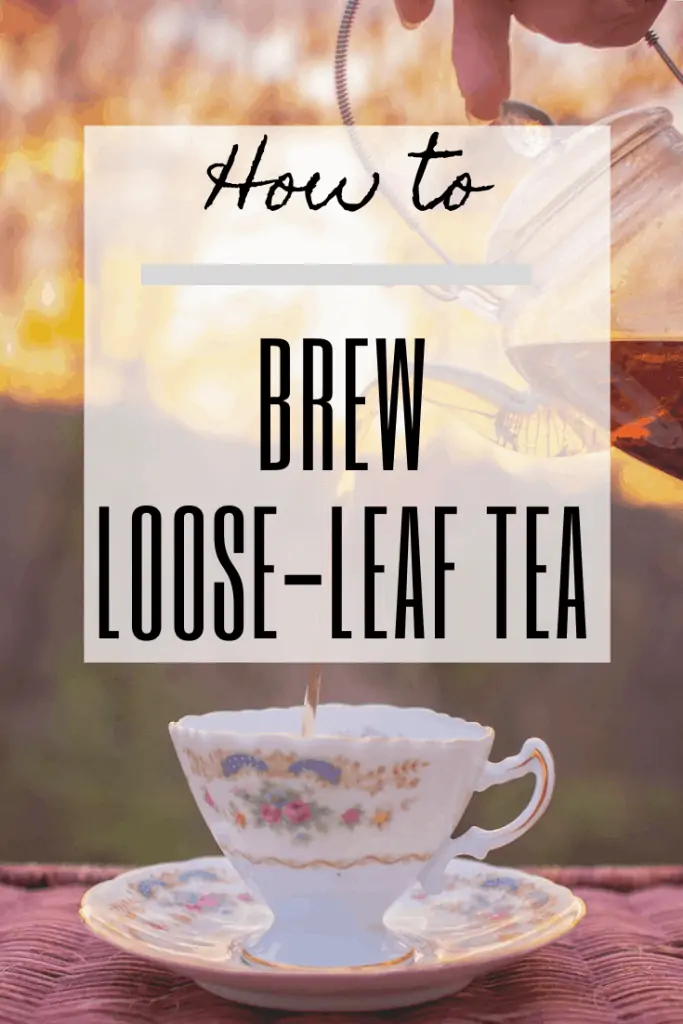
What is the world’s most common drink?
If you said water, congratulations! Now, can you name the drink that comes in second?
TEA. No kidding. Not wine, not beer, not coffee – not even close! Reportedly, about 3 billion cups are consumed every day.
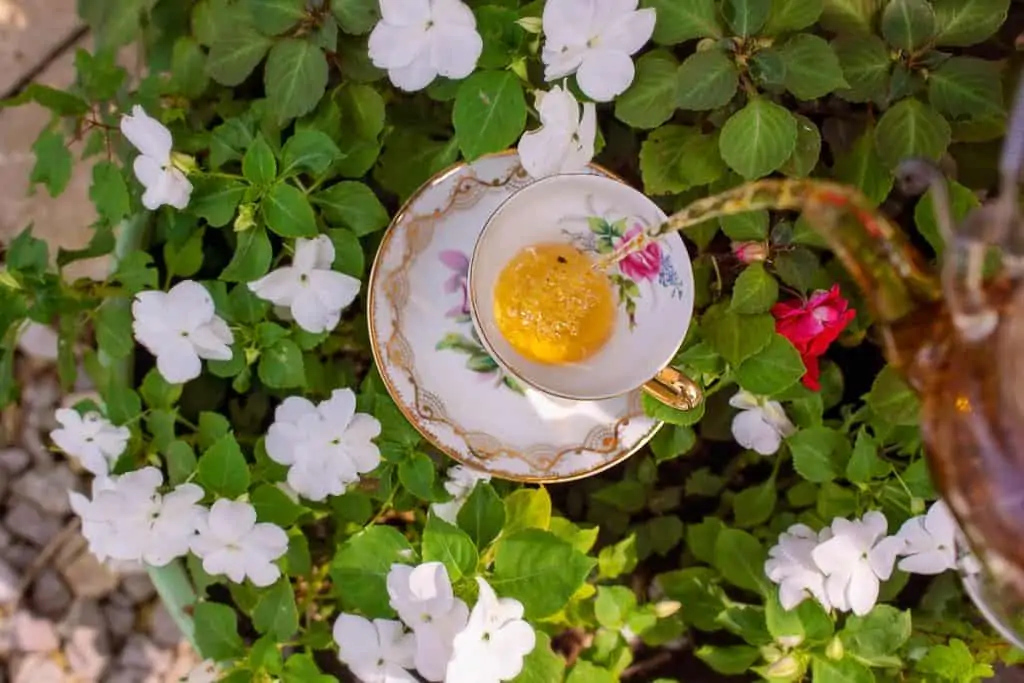
Are you a tea lover? If so, you might wonder how you can make your tea as delicious as possible.
If you’ve read my last article, "Loose Leaf Tea vs Tea Bags," then you already know that, in my opinion, the most delicious way to brew tea is to brew loose-leaf tea.
But aren’t tea bags the most convenient way to brew tea?
Not necessarily!
The right tricks can make a flavorful gourmet cup of loose leaf tea amazingly easy!
Let me share a few secrets.
Looking for ideas about herbal tea? Check out this guide to brewing herbal tea (tisanes), or try making cold-brew chamomile, blueberry herbal tea, or thyme tea.
How to Brew Loose Leaf Tea Using a Tea Ball
No teapot? No problem!
There are lots of options. However, a standard-size tea ball (like the one pictured below) is almost always too small. The leaves expand, and flavor gets trapped inside.
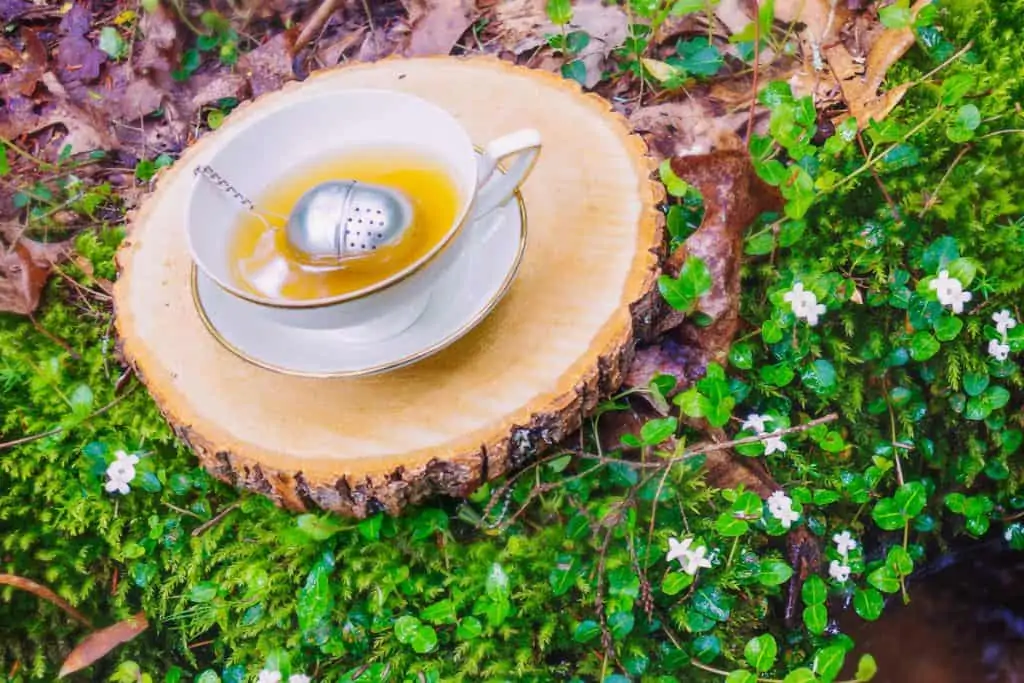
Much better choices include a large tea ball or a wand infuser. The main thing tea leaves need is room to expand and release all their yummy flavors.
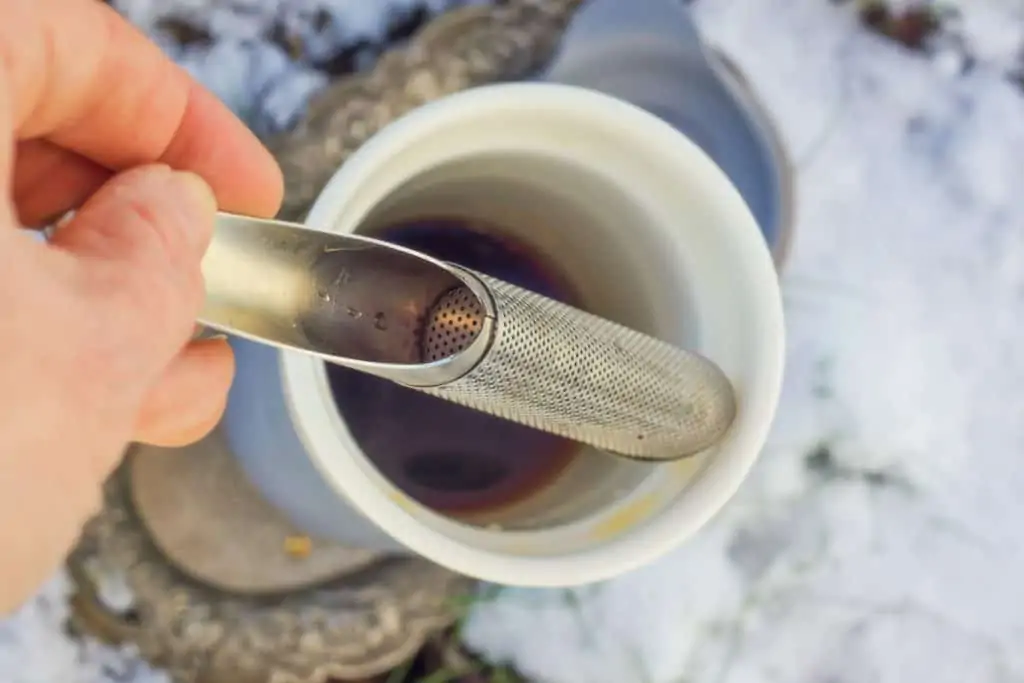
How to Use a Tea Strainer
Want more room than a tea ball can provide?
Here’s an easy solution: A strainer can hold a tablespoon of tea—and more importantly, it will release the flavor right into your cup!
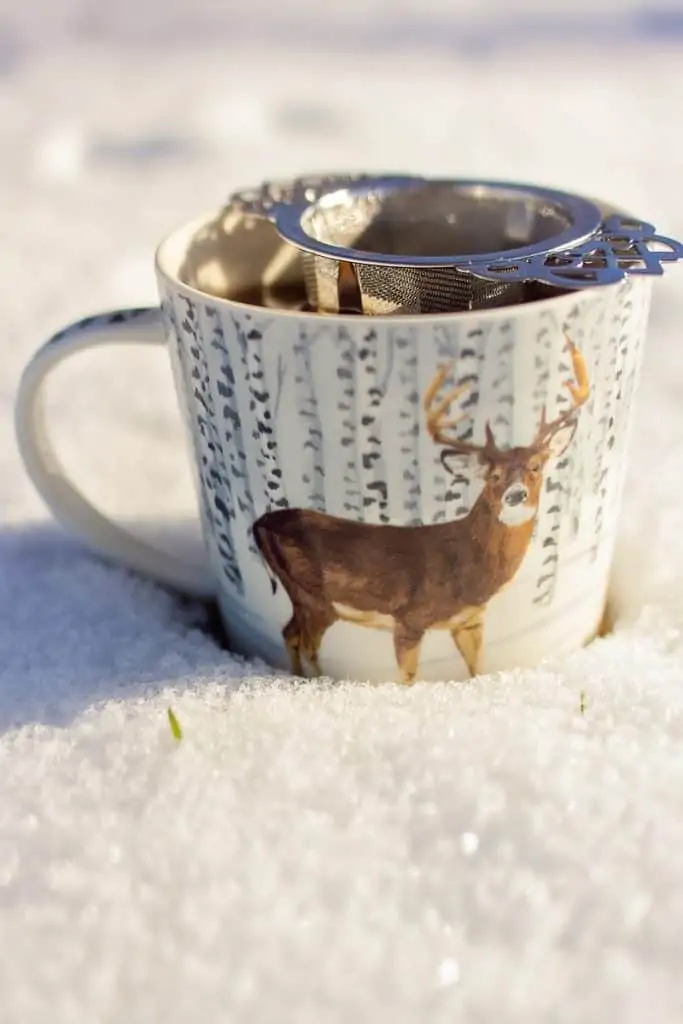
Use a French Press for Tea
If you already have a French press, that can be a great way to brew tea.
Just be sure to clean it thoroughly with baking soda if you have also used it for coffee.
How to Brew Loose Leaf Tea in a Teapot
One of my favorite options is a glass teapot. You can watch the tea leaves unfurl.
It's especially beautiful when making something like a beet latte with rosebuds!
Glass has neutral effects on the flavor of tea (more about that later). And it’s easy to use and clean.
Usually glass teapots have a removable basket (glass or steel) that leaves only the liquid tea in the pot.
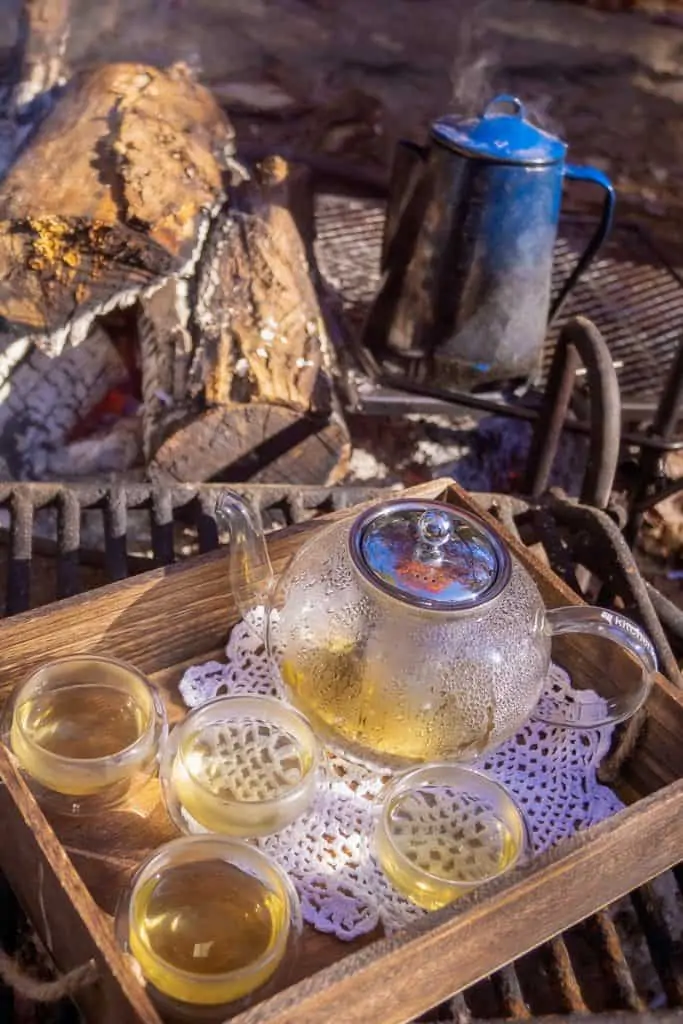
Glass teapots made of Borosilicate glass, the same type of glass used in beakers over an open flame in science labs. That means you can pour boiling hot water into them and they won’t break!
You know that curious me just HAD to try this out. One roaring campfire plus one glass teapot… and it worked perfectly!
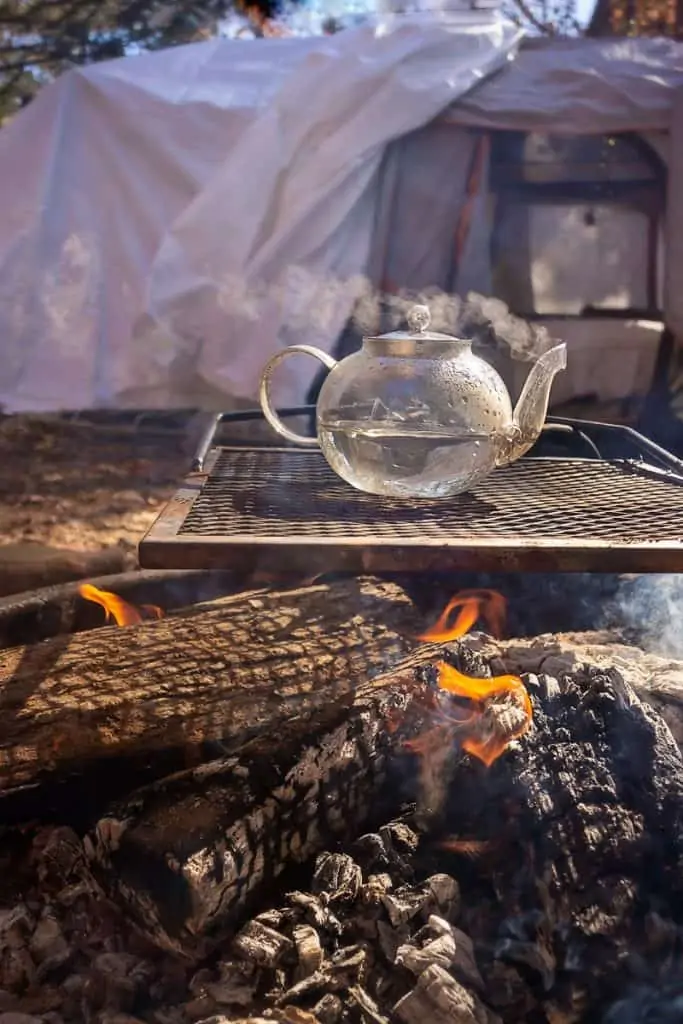
This teapot with a spiral wire strainer in the spout, pictured below, allows only the liquid to come out.
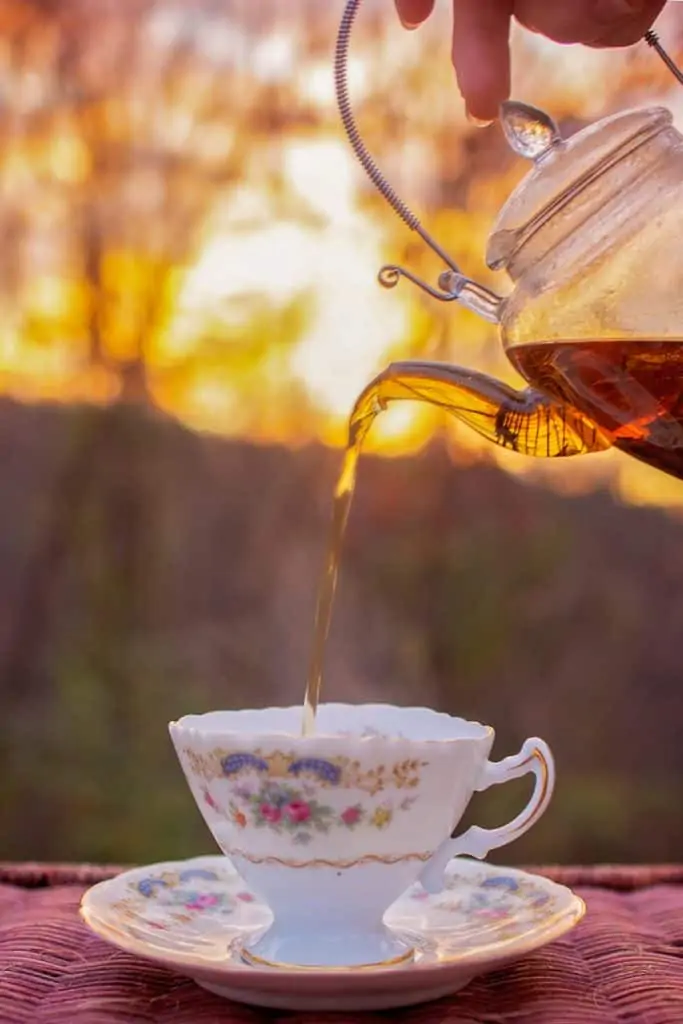
And, bonus: since loose leaf can be just as flavorful on the second, third, or even more steeps, a teapot keeps the leaves ready for their next little bath.
Specialty Tea Gear
Now let’s look at some teaware for specific uses:
The lovely vessel pictured below is called a gaiwan.
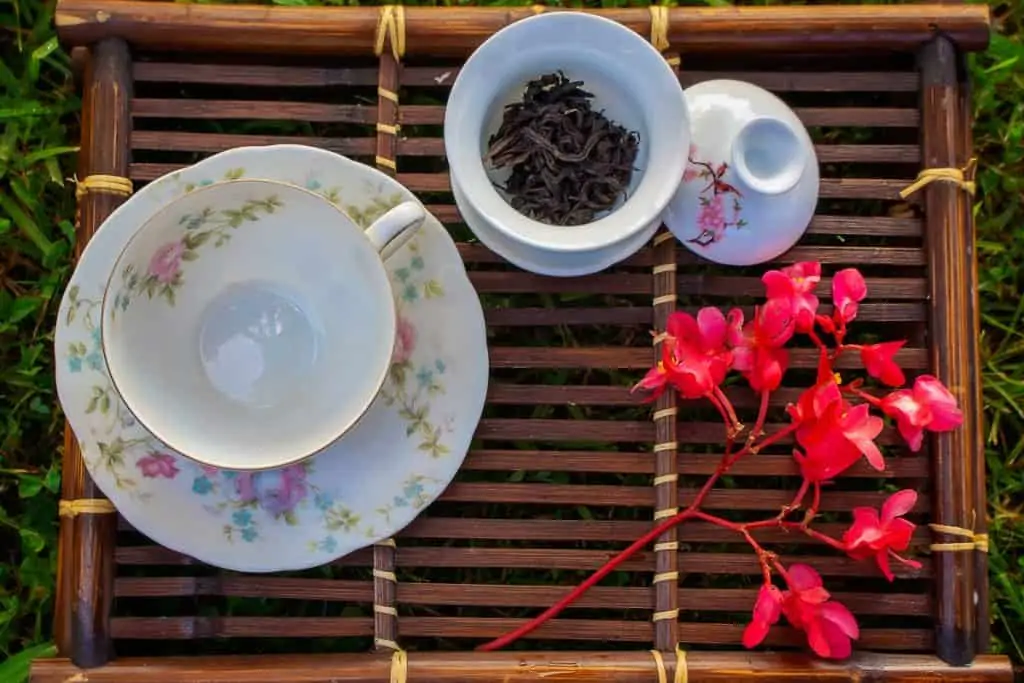
The gaiwan is used for all types of Chinese tea. The tilted lid holds back the leaves as the precious tea flows into the cup.
This style of brewing is called gong fu cha (simply, tea practice). It's one of my favorite ways to slow down and really enjoy my tea.
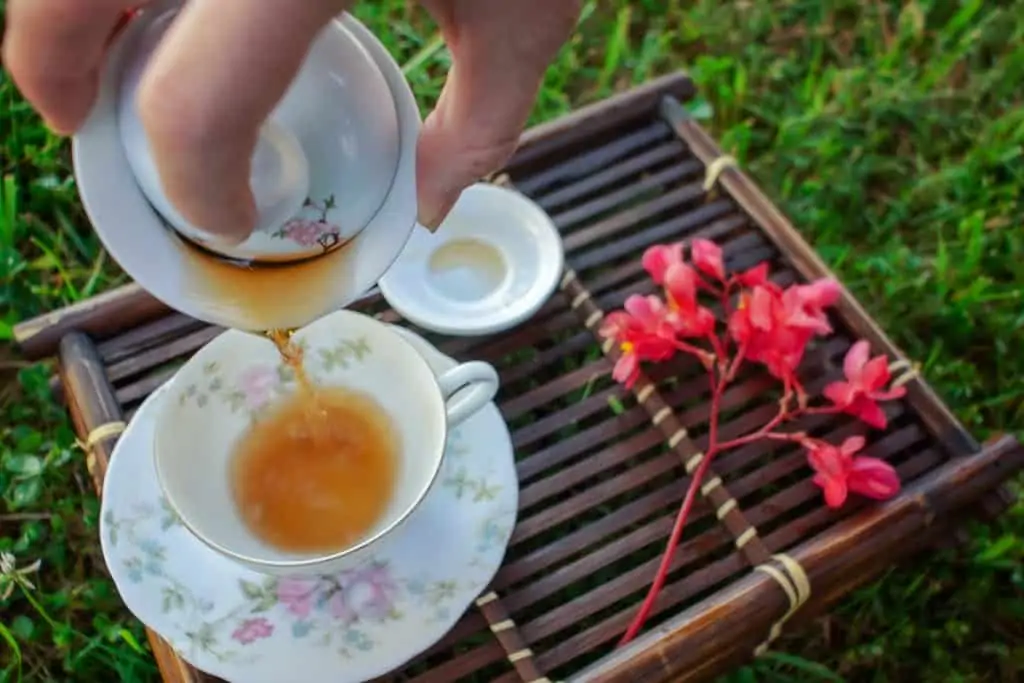
Japanese green tea thrives in a kyusu such as the one pictured below.
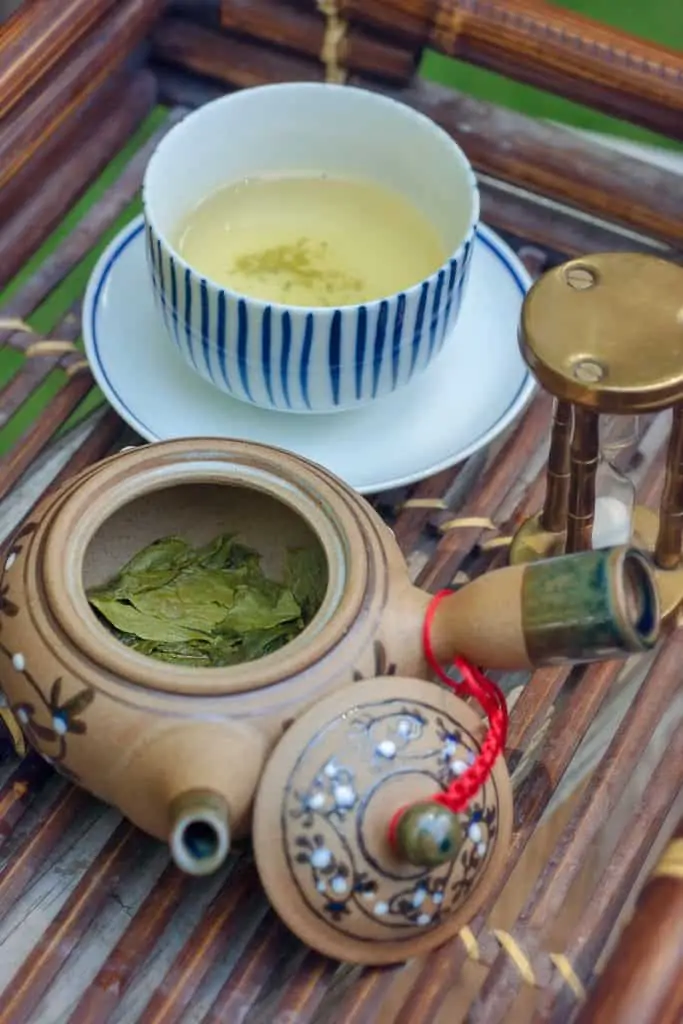
The unglazed clay reacts with the tea to emphasize a bouquet of flavors.
Interested in trying out matcha? The brewing steps are different! Try it out in this vanilla matcha latte.
Even more highly reactive is silver. As a little girl, I thought my mom’s silver tea set was so glamorous.
But it turns out that silver can drastically affect the taste of tea—and not always for the better. Some people like it with specific puerh teas.
I love to serve white tea in silver, but never green or black teas.
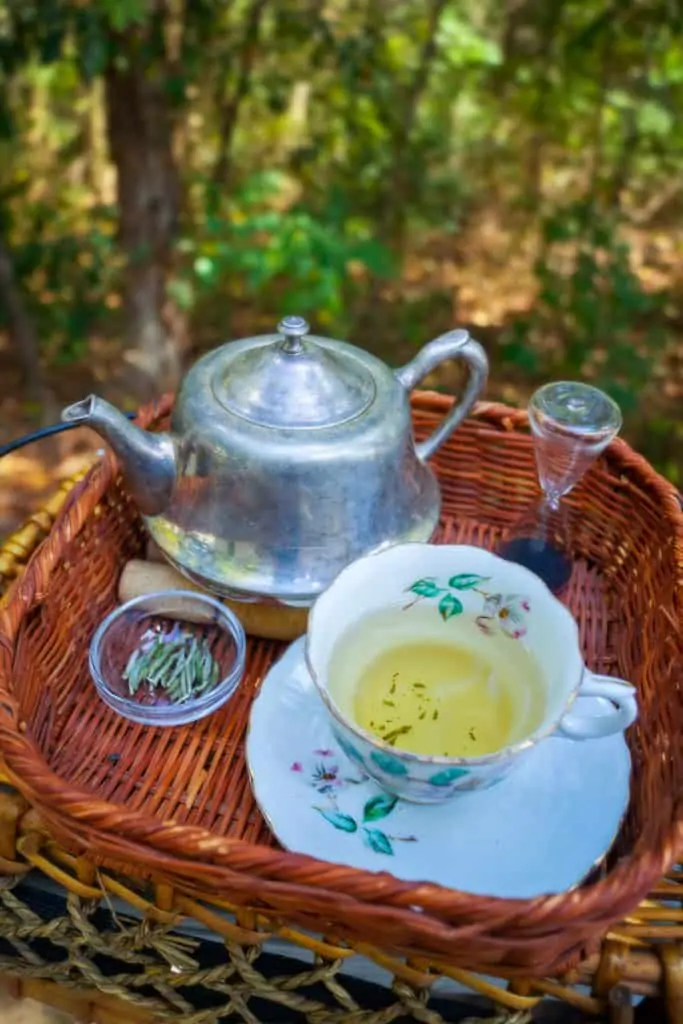
What's the Best Ratio of Tea to Water?
Now that you've got all of your tea gear ready, how much tea and water should you use?
A good rule of thumb is 1 teaspoon of tea for no more than 8 ounces of water.
Experiment according to your tastes, because I usually prefer a stronger brew, and generally use about 6 ounces of water per teaspoon of tea.
Let’s sum this up: your tea brewing options are endless, but not so complicated after all. And tea, above all, is fun! So don’t be afraid to experiment with your tea vessels.
How to Brew Loose-Leaf Tea
Equipment
- tea ball or infuser (if not using infuser teapot)
Ingredients
- 8 ounces water
- 1 teaspoon loose-leaf tea or herbals, amount variable See notes "How much tea?" and "Tea vs. Herbals"
- sweetener of choice (honey, sugar etc) Optional
- milk Optional
Instructions
Hot Brewed Tea:
- Heat the water using the following guide:Black Tea: Full boil (212°F)Rooibos: Full boil (212°F)Pu-erh: Full boil (212°F)Oolong Tea: Near boiling (195°F)Green Tea: Simmering (175°F-180°F)White Tea: Simmering (175°F-180°F)Mate: Steaming (150°F-160°F)Herbals: Full boil (212°F)
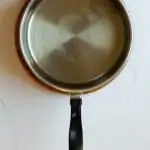
- Add loose tea to an infuser teapot, an infuser or a large tea ball.
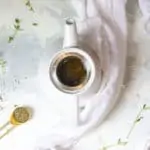
- Brew tea using the following guide:Black Tea: 3-5 minutesRooibos: 5-10 minutesPu-erh: 5 minutesOolong Tea: 2-3 minutesGreen Tea: 1-2 minutesWhite Tea: 2-3 minutesMate: 3-5 minutes.Herbals: 5-10 minutesFor longer brews, it's helpful to cover the tea while brewing to keep it warm.
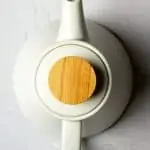
- Pour the tea out of the teapot, or remove the infuser or tea ball from your mug.Optionally, sweeten to taste or add milk.
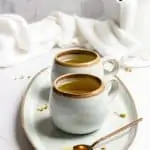
Cold-Brew Tea:
- Add tea or herbals to a glass container.Cover with water, and chill in the fridge for 8 hours.If using herbal tea, the timing isn't critical and you can do a longer brew if desired. If using tea leaves, remove the tea from the water after 8 hours to avoid bitter flavors.
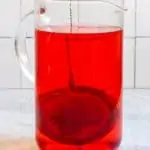
Notes
- Tea is a specific type of plant leaf.
- Herbals can include fresh or dried flowers, herbs, fruit, or any other non-tea plant.
- Some varieties of herbals, especially those made with fruit or roots (such as cranberry tea or fresh gingerroot tea) benefit from a long boil directly in the water instead of the brew times indicated.

About Nicole McKinney
Nicole McKinney is a photographer, rare tea enthusiast, and nature lover. She lives with her husband in Eastern Kentucky. Follow Nicole at Tea on the Trail.


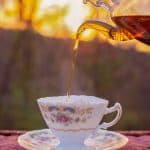
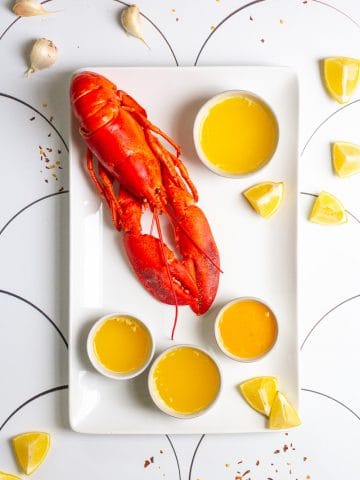
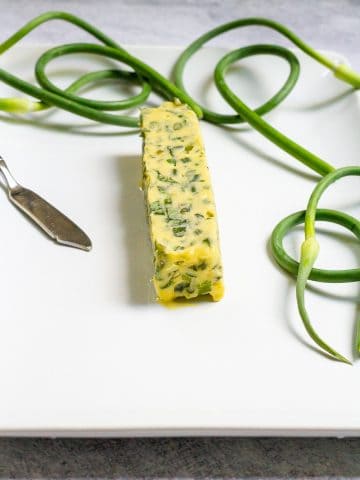
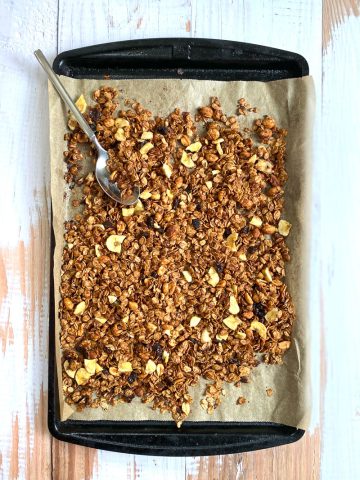
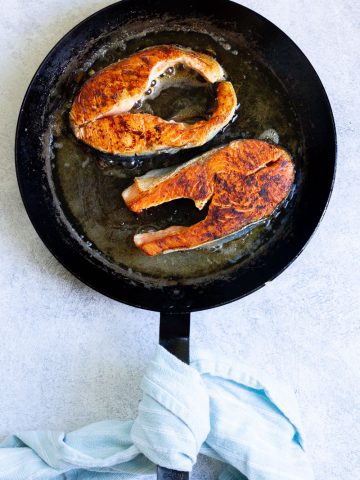
Leave a Comment: